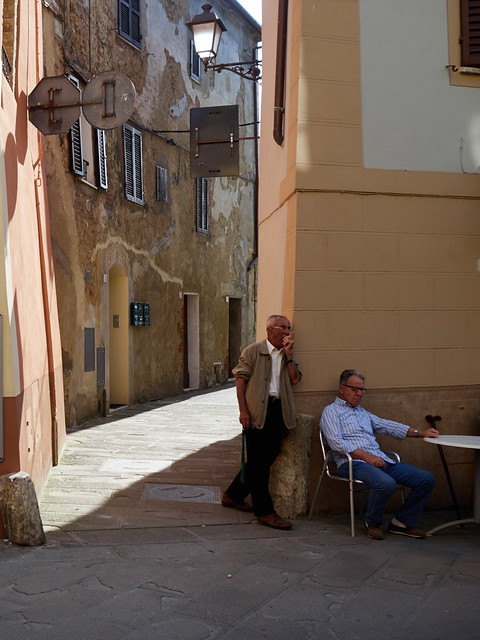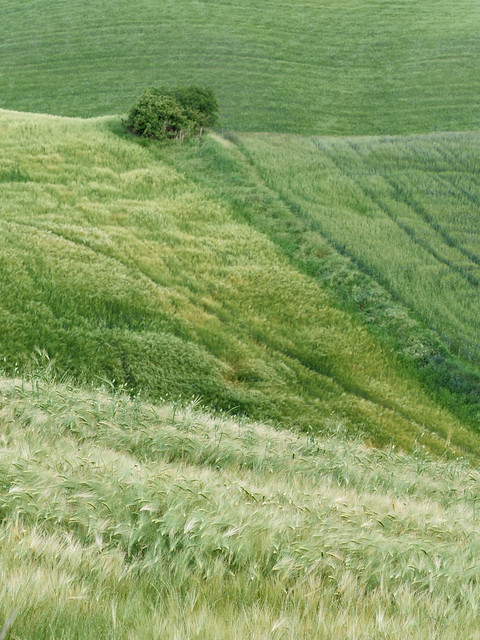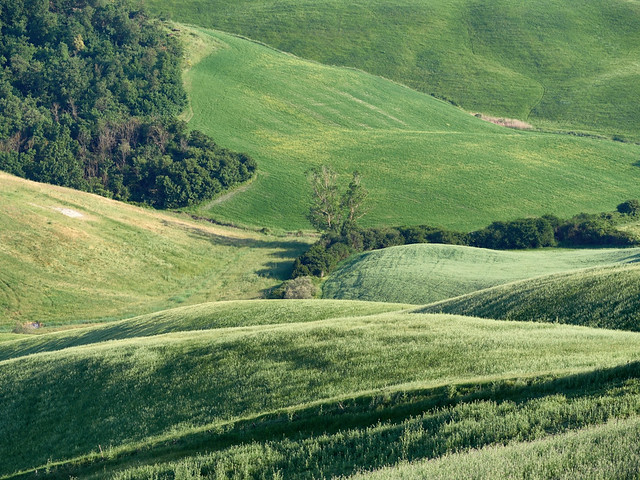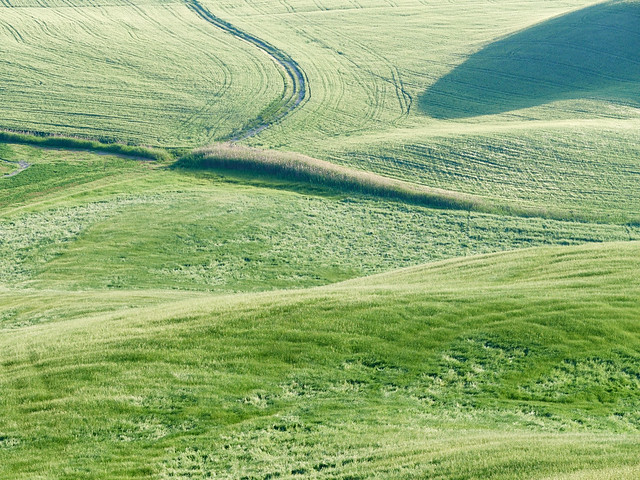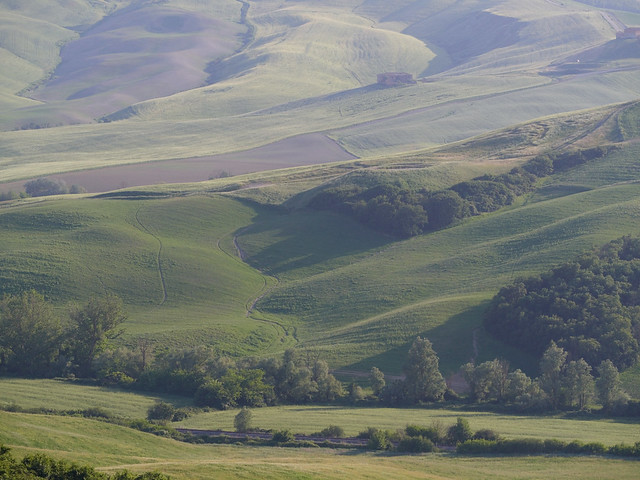Some thoughts on Mylio
here, there & everywhere
The following is a fairly lengthy commentary on Mylio, a product which has been vaguely on my radar for some time. It first emerged towards the end of 2014, and received a lot of glowing praise. Mylio promises to do this (amongst other things): allow you to access a catalogue of all your photos stored on any of your digital devices on all of these, with near instantaneous updates. It’s an ambitious objective which others have tried, and failed, to achieve, but at this level at least, Mylio absolutely hits it out of the park. So what is Mylio, anyway? To me this was initially a little difficult to grasp, but basically Mylio is a photo management application, with feature-parity applications for Mac, PC, iDevice & Android, together with a set of cloud services and storage which bind all these together, if (and this “if” is important) you want it to.

Mylio Mac version, showing a folder view
So why would I need Mylio? Well, the idea of being able to access, and work with, a catalogue and sub-catalogues of my photography at any time and any place is highly appealing. It means, for example, that I can do things like tagging, rating, keyboarding and editing photos (in the sense of curation) while being stuck on a train, or in an airport. It means that I have access at any time to portfolios to show people. Mylio even offers the possibility of processing RAW images from many formats, with quite an extensive toolset.
I’ve been hoping and searching for such a tool for over a decade. Aperture coupled with PixelSync came close, until Apple first destroyed the ability for PixelSync to access Aperture’s library, and then killed Aperture itself. And of course never even attempted to provide a cross-device solution for Aperture. In fact in my opinion Aperture set, and still sets the benchmark for Digital Asset Management (DAM) in the digital photography age. The combination of it’s abstracted approach to file storage, which disassociates the concept of a photo with a single physical file, the much-copied but never equalled Stacks, the superbly implemented metadata tools, the quick browsing mode introduced in later versions, and extras such as the light table and book tools, were and still are way in front of the competition.

Mylio iPad version, showing the same folder
It is quite striking now just how many advanced and pro photographers - who we assumed all had to be using Lightroom - are now coming out of the woodwork looking for alternatives to Aperture. The Aperture pro user community was never very verbose, at least compared to Lightroom. There, Adobe marketing lavished money and flattery on building up an army of shills, all in turn pushing their tutorials, books and workshops. It is remarkable how large a market there seems to be for teaching people how to use what is supposed to be such an intuitive application. But it is also remarkable how many articles on Mylio by independent writers mention that they specifically need an alternative to Aperture. So Mylio is well worth my attention, and setting Aperture as a benchmark seems fair.
As I’ve already said, on the cross-device side Mylio blows Aperture and everything else into the weeds. Setting up multiple devices and synching between them is ridiculously easy. Mylio gets around the issue of moving large amounts of data around by allowing you to set the type of synchronisation by device, at thumbnail, preview or full file level. Using full file synchronisation of course provides a seamless way to maintain backups. Optionally, you can also buy cloud storage and use this to back up valuable files. Mylio does not actually require you to use cloud storage, a point that many seem not to understand. It works at a multi-device peer to peer level, where the cloud is just another device. It also has intelligence, and options, built-in to sync by wifi only when available, and to use cellular data only if enabled. Finally it provides a method of creating a temporary ad-hoc wifi network between two devices for when there is no adequate internet connection available. I could go on for a while about the synchronisation aspects of Mylio, but suffice it to say it is all very, very impressive. Another impressive aspect is the speed of import and preview creation. Aperture was extremely fast at this, compared say to Lightroom or CaptureOne, but Mylio is just as rapid.

Mylio iPhone version, again, showing the same folder
For a customer who’s interest in photography is basically as a part of their social life, we could stop here, and just say “buy it”. It is far better than Apple’s offerings, and I assume also Google’s, and Adobe has nothing to touch it in this market. The strong, one-touch integration with Facebook and Flickr is a killer feature. But what about other customers, which for the sake of discussion I’ll call “advanced” ? Well, clearly different advanced customers have different needs, so generalisation is futile, but for me Mylio is not quite there yet.
So what is missing in Mylio ? The biggest stumbling block is the lack of any kind of “Stacks” or “Versions” feature. A standard Use Case for me is to select a photo and open it in an external RAW processor, such as Iridient Developer, and then save a version back. I would like my DAM application to keep track of these versions. Mylio cannot. In fact, Mylio, today, can only show one variant of any file with any extension at a time: if you have two files, Myphoto.tif and Myphoto.jpg, in the same folder, Mylio can only show one or the other. Not both. PhotoSupreme can show both, or indeed many, in the same folder - provided they have the same filename root. Aperture could not only show many, but they didn’t have to be in the same folder or even the same volume, or have the same name, because Aperture works by file reference from its database, not by relying on a physical organization. The fact that Mylio cannot do this does make me a little concerned about possible fundamental design weaknesses. However, it does, I believe, have a feature which can detect file duplicates using a hash signature, so possibly an extension of this technology could be used to implement a strong variants feature. Hey, Mylio, if you want me to write the functional specification, just get in touch 😊. Or better, as many frustrated CaptureOne users have written in the PhaseOne forums, “just copy Aperture, fercrissakes!”.

The fact that Mylio makes it as easy as a simple click to open a RAW file in any local application that can handle it - here, Nik SiverEFX Pro - makes it incredibly frustrating that it doesn’t follow up and manage the results.
This is really the only major stumbling block for me, but it’s a big one. A medium sized stumbling block is the currently quite primitive keywording system. For something which is aimed at being a near-permanent, long term and robust tool for managing photos - and “memories” - I’d like to see some attention given to a set of keyword and keywording management tools, and metadata management in general. It’s not a bad start at all for a 1st release, but it isn’t 1999 any more. Again, copy Aperture! A smaller complaint is that even in the “fluid” view, there is sometimes some truncation of preview images when the proportions tend towards the wider end. So for a gallery of XPan images this has some limitations.
I should emphasise that I have raised all these points with Mylio support, and have received rapid, detailed and attentive answers. Obviously they’re not going to implement everything every customer asks for, but they do say they’re taking suggestions onboard, and I believe them. Generally Mylio customer support gets very high praise.
The Mylio user interfaces are very smooth and well designed. Generally they are very intuitive, but there’s plenty of online help if you get stuck, there’s the aforementioned excellent customer support, and there’s also The Official Guide to Mylio available at a token price. Really not too much to say there except to compliment Mylio’s UI designers on a job well done. Performance is also good on all devices I’ve used it on (2008 Mac Pro, 2011 MacBook Air, iPad 2, iPhone 5), to the extent that basically you don’t notice it. Which is as it should be. Reviewing, rating and sorting photos in Mylio is a complete breeze.
Mylio also provides a complete set of image editing tools, including a RAW processing stack. I’ve played around with this a bit, and it seems to work well enough, but it isn’t something I would expect to use. Although I can understand the commercial argument behind providing this feature, frankly I think it is a little out of line with the overall Mylio vision. My understanding is that Mylio wants to help liberate us from locked-in, “silo” applications, not provide (yet) another alternative. There is no shortage of excellent, mature RAW processing tools, but on the other hand there are practically no DAM tools, consumer level or other, that aren’t stuck in a 20-year old paradigm. Having said this, the ability to check actual exposure latitude and sharpness when sorting and rating is certainly useful.
So how does a Mylio-based setup compare with other solutions? Well, since Aperture imploded, I’ve tried two things - actually three. I’ll start with the third, which was returning to the venerable, but still quite impressive MediaPro, now owned by PhaseOne. MediaPro has many strengths, and I’m very familiar and invested in it. But since it was first sold to Microsoft, and then to PhaseOne, it has received no significant feature development at all, and is quite literally stuck in the 1990s. It’s a great pity, but clearly it is nuts to hope that PhaseOne are ever going to do anything with it, so despite everything, and with great regret, I’ve largely given up on it. So my next move was to try to find an alternative which did not lead to a new locked-in solution (e.g Lightroom) or indeed to any kind of dependency on Adobe. I found this in IDImager PhotoSupreme, which I’ve written about previously. I still do quite respect PhotoSupreme, but finally I have to admit that it is slow, locks up or crashes when trying to deal with anything heavier than trivial import tasks, and has some quite weird UI design and workflow touches which lead to a near vertical learning curve. It’s got some really nice ideas, but it desperately needs a decent User Experience designer to work with the one-man band developer. Also, it doesn’t even attempt to provide multi-device support. A saving grace is that it does have a “Stacks” feature, and quite an innovative one at that, but it is filename based and is not enough to save the day, for me. So my next move was to see if I could live with CaptureOne 8, complete with it’s kludged-together, bastardised MediaPro catalog add-on. Well, I managed after some effort to import my complete Aperture library, and I have been working with CaptureOne for some months, but ultimately I’m finding that it isn’t the best RAW processor for my Olympus ORF files - it gives very smudgy fine detail - and personally I don’t really like the rather unsubtle default look which it applies, and which is hard to undo. I keep coming back to Iridient Developer. But ultimately, the ideal solution is flexibility of choice, and to use the right tool for the right job, just like we used to be able to choose which film to use. And Mylio promises a solution which easily enables just that.
There has been quite a lot of commentary about Mylio’s pricing on various fora and blogs, with two main themes: first, people are shocked that they’re expected to pay at all, and second that they’re “not gonna put 27 Tb of their photos in any damned cloud”. As far as the second argument is concerned, it’s a complete strawman. Mylio offers a cloud option, but does not require it. You can keep all your originals on your own computer, no problem, no fuss. As for pricing, well personally I’d call Mylio reassuringly expensive. If I’m going to commit basically a lifetime of photography to an application, I want the company behind that application to have a solid long term business model. And such a business model still requires a primary revenue stream. Sure, Google, Yahoo, Facebook will give you “free” cloud space. But if it’s free, you’re not the revenue source, i.e you’re not the customer. Somebody else is. So what are they buying ? If you’re comfortable with the answer to that question, fine. Personally, I’m not. If I decided to go ahead with Mylio, it will cost me $100 a year, for the second tier, which is slightly less than my web hosting. Seems ok to me.
A persistent, and valid criticism of the subscription model is that it pushes you into vendor lock-in. If you have invested a lot of time and effort into working with proprietary tools, then you’re exposed to the risk of losing your work, if the vendor goes to of business, or changes strategy, or you can no longer afford the pricing. Leaving aside the non-destructive RAW processing, Mylio works essentially with XMP sidecar files, so all your rating and keywording work is safe. And since it works with XMP files, any changes made show up in other XMP-conversant applications, and, generally, vice-versa. I say “generally” because for example with Iridient Developer, star ratings set in Mylio show up fine (Iridient reads the XMP file), but in reverse direction it doesn’t work, as Iridient writes only to it’s own, proprietary idsf file. Which, really, is fine, as I’d want to use Mylio to rate and sort photos, and then send them as a batch to Iridient to process them.
And this, then, is where just now, it all breaks down. As I’ve already said, Mylio cannot recognise multiple derivatives, or variants, of the same photo, so when I save a TIFF back from Iridient, Mylio, having it’s “prefer RAW” option set, will ignore it - unless I change the filename root, thus destroying the only referencing I have. And even then, Mylio will interpret this as a new, completely separate photo. It is a new file - but it is not a new photo. Until Mylio sorts this out, it will remain a highly promising, ever-so-close, but ultimately inadequate application for me. I’ll just have to hope that I’m not the only one who feels this way, and that there is sufficient business justification to expand the feature set.
So, in summary, I like Mylio a lot. It doesn’t (yet?) do quite what I want, but it might still do enough to be worth subscribing too. But it you are not burdened by the cumbersome needs of my personal workflow, you might already find that Mylio’s fulfilled promise of letting you access all your photos, on any device, everywhere, is quite enough reason to adopt it.





